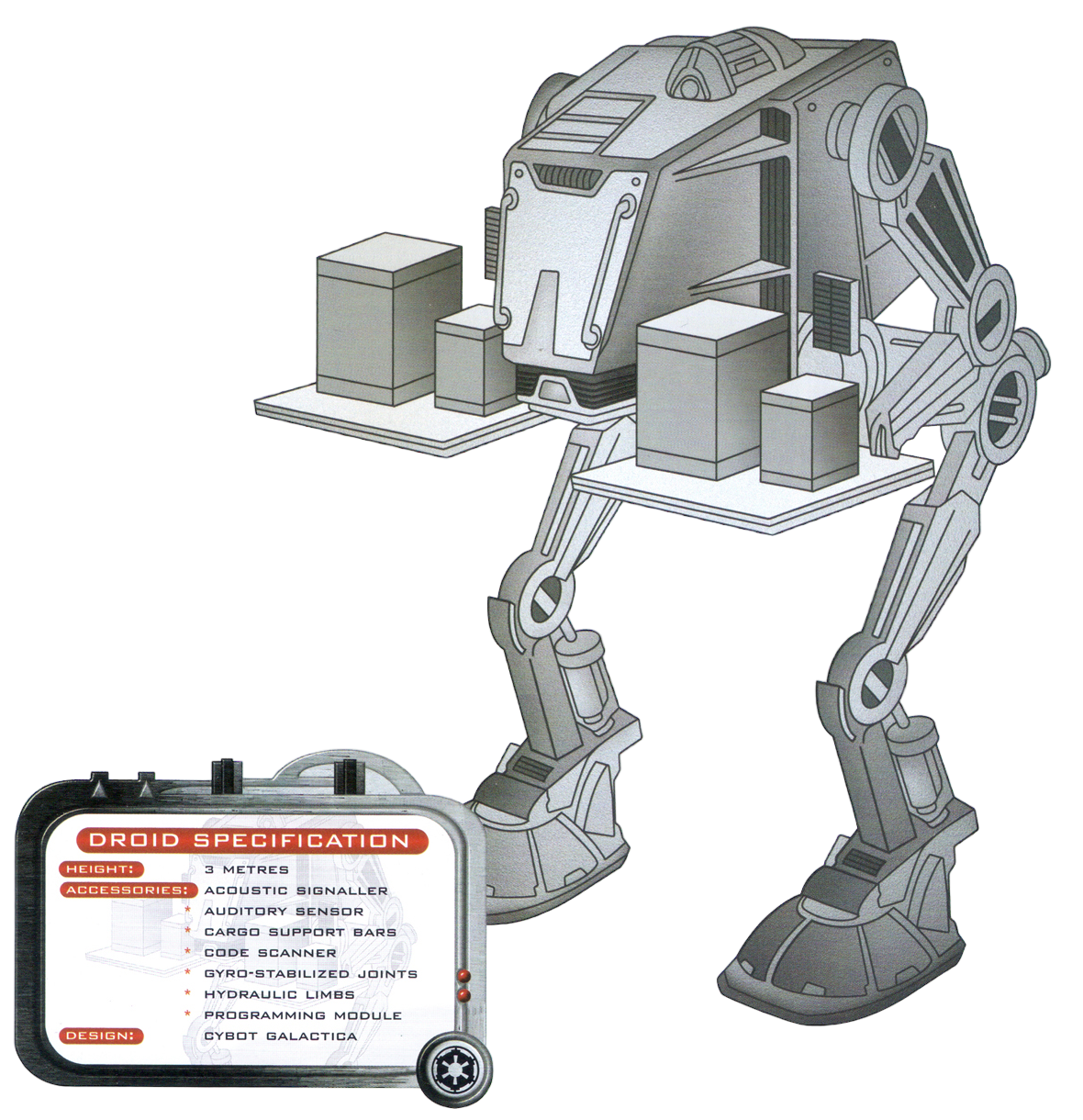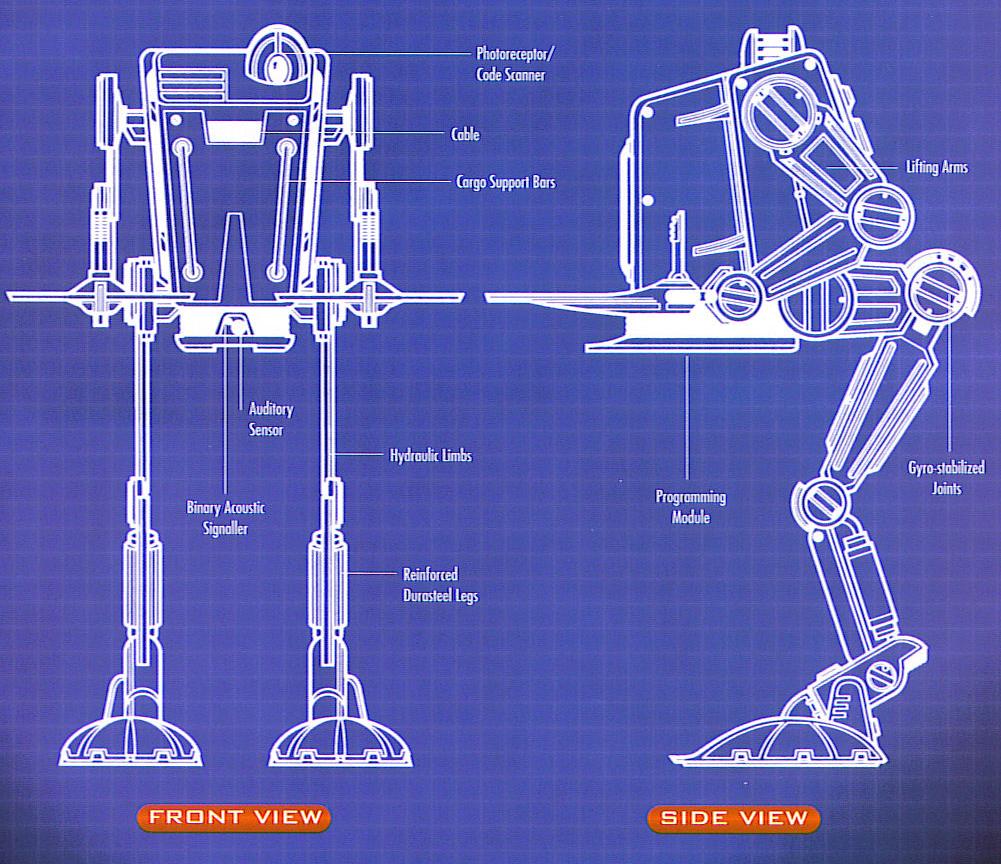
A list of CLL-8 specifications with an illustration attached.
Binary load lifters were infamous for their grievous stupidity, but this limitation was more than matched by their extreme strength. One CLL-8 on Stassia ignored the fact that the floor it was piling boxes on was creaking, and even after the whole corner crashed to the next level, it continued to pile on more boxes. CLL-8's were very easy to program and were completely obedient, but they lacked the intelligence to anticipate and react to different situations.
These droids communicated in a simple binary language; as a result, they could only understand the simplest of verbal commands from their masters. Translator droids such as the 3PO-series (also designed by Cybot Galactica) were often employed to program the CLL-8's for the owners.

A blueprint of the front and side view of a CLL-8 binary load lifter.
Even though artificial intelligence had increased impressively since the creation of the CLL-8, Cybot Galactica saw no reason to alter the original design as the droid remained reliable and efficient. The droids were a low-cost, automated replacement for more traditional methods of cargo transportation and quickly became successful in spaceports, factories and other such industrial workplaces. CLL-8 units possessed a standard analytic drive to process individual orders which they followed obediently.
The CLL-8 resembled a biped walker similar to the Imperial AT-ST, and at 3 meters tall, they were significantly taller than most other two-legged droids. Its limbs were reinforced with durasteel and were powered by hydraulic mechanisms which allowed it to transport heavy loads with ease. The droid couldn't discern its center of gravity when working with particularly heavy loads so gyro-stabilizers helped it to keep its balance.
Its wide "hands" could carry up to several tons without straining their hydraulic pivots. A primitive photoreceptor scanner was placed upon the CLL-8's head which allowed the droid to see and identify its cargo. A hard armor covered the droid, ensuring that it would last for a long time by protecting the droid from the inevitable scratches and dents associated with hard labor and also by preventing it from doing too much damage to itself because of its inherent stupidity. The fact that CLL-8's had managed to stay relatively intact and were still going about their tasks undaunted said a lot about the foresight of Cybot Galactica.
Aboard the prison station Cog Hive Seven, CLL-8 load lifters were used to move freight in the station's cargo bay. Intergalactic Banking Clan analyst Vesto Slipher used his yellow card security access to give one of the droids confidential orders to retrieve and deliver a special package to him directly, without it going through the usual security screening.
The series was used aboard the Death Star I.
After the Battle of Yavin, CLL-8 binary load lifters were used by the Valarian criminals in their smuggling depot on Tatooine; and by the Talusian Smugglers in their base on Talus. Modified CLL-8 binary load lifters equipped with weapons were used as battle droids and sentry droids by the Rebel Alliance in a prison facility within the hidden Rebel base on Corellia. Another model of battle droid derived from the load lifter was the CWW8 Battle Droid.
- Death Star Technical Companion
- Death Star Technical Companion, Second Edition
- "Smuggler's Log" — Star Wars Adventure Journal 3
- "Cynabar's Droid Datalog" — Star Wars Adventure Journal 14
- The Essential Guide to Droids
- The Official Star Wars Fact File30
- Arms & Equipment Guide
- Star Wars Galaxies: Jump to Lightspeed: Prima Official Game Guide
- Star Wars Galaxies: The Total Experience: Prima Official Game Guide
- Star Wars Galaxies: The Complete Guide: Prima Official Game Guide
- The New Essential Guide to Droids
- Star Wars: Imperial Assault — Core Set